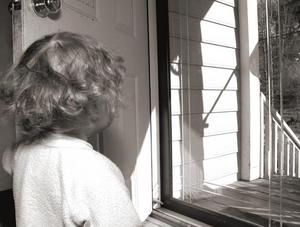Childhood is a time for play and exploration, a time for making friends. Sometimes those friends live next door. Sometimes they live across the street. Sometimes they live in a child’s mind.
Imaginary companions are commonly found among children. A 2001 study of 1800 school-age children found that 46.2 percent of children reported experiences with imaginary companions. So, should parents be alarmed to discover that their child’s new friend is imaginary?
My son was three years old when he brought two new additions into our family – Tom and Jerry. (I’ll give you two guesses as to what he was watching over at Grandma’s house.) At first my wife and I thought it was cute, but as Tom and Jerry began to require plates at the dinner table and seats in the minivan, we became concerned that perhaps these imaginary friends were a sign that something might be wrong with our child.
As it turns out the creation of imaginary friends is a normal developmental stage for many children according to Laurie Schuler if the Akron Children’s Hospital. Despite such statements, many parents worry that their child with imaginary friends may be considered odd, shy or troubled. Although imaginary companions may be disconcerting for parents the truth is much more positive — and intriguing.
General Tendencies of Children With Imaginary Friends
Studies have shown that children with imaginary friends end to be less shy than children without imaginary friends. In addition, children with these friends are often better able to focus their attention and see things from other people’s perspectives. The administrative director of pediatric psychology at Akron Children’s Hospital, Dr. Georgette Constantinou, describes imaginary friends as being a normal way for a child to deal with problems in his own way as well as work on fears and insecurities.
Some researchers describe a child’s need to create an imaginary companion as a desire to achieve competence and mastery. Imaginary companions typically take two forms: one more competent than the child and one less competent. The more competent imaginary friend represents the child’s desire to be competent by emulating the imaginary friend. If the child’s imaginary friend is less competent than the child, then the child is attempting to achieve competence by being better than his or her imaginary companion.
While research seems to support imaginary companions as being a harmless part of growing up, what does their presence tell us about the children who imagine them?
Are Children with Imaginary Friends More Creative?
Most research indicates that children with imaginary companions do not appear to be more creative than those who lack them. However, a study by Dr. Linda Silverman, Director of the Gifted Development Center, found that gifted children are much more likely to have more than one imaginary companion than non-gifted children. Out of the children who had imaginary companions, 50% of the gifted students reported having more than one while only 9% of the average students reported having more than one imaginary companion.
Dealing with Imaginary Friends
The best way for parents to deal with children and their imaginary companions seems to be a policy of neutrality. Jan Faull, a child development specialist, notes that imaginary friends help children distinguish between reality and fantasy, but parents should neither support nor attempt to eliminate a child’s pretend companion. Parents should keep their involvement with their child’s imaginary friend to a minimum. The consensus concerning parental involvement supports letting children keep their imaginary companions for as long as they need them, provided that interaction with the imaginary friend doesn’t overtake interaction with real people.
When our son was around other children, typically he would say that his imaginary friends were away at school. It seems as though our son would put up his imaginary friends when he didn’t want to play with them, but when he was alone and needed them, he could pull them out and have a couple buddies to play with.
The overall conclusion for parents of children with imaginary companions seems to be that this behavior is a normal part of childhood. Imaginary friends should not be cause for concern unless a child begins to prefer to play with his or her imaginary friend over real people or if the child continues interacting with an imaginary friend into adulthood, according to Dr. Constantinou. Parents of a child who has imaginary companions have no cause to worry. They are getting to see a healthy glimpse into their child’s imagination.
Sources:
Faull, J. (2003). Imaginary friends help children learn the difference between fantasy, reality. The Seattle Times. www.seattletimes.nwsource.com/html/living/20011823866_faull27.html
Harter, S. & Chao, C. (1992). The role of competence in children’s creation of imaginary friends. Merrill-Palmer Quarterly, 38, 350-363.
Pearson, D., Rouse, H., Doswell, S., Ainsworth, C., Dawson, O. Simms, K., et al. (2001). Prevalence of imaginary companions in a normal child population. Child: Care, Health and Development, 27, 13-22.
Rogers, M. T. and Silverman, L. (n.d.). Recognizing Giftedness in Young Children. Gifted Development WebSite: www.gifteddevelopment.com
Schueler, L. (2003). Imaginary friends: friend or foe?.www.akronchildren.org/press/health/2003/imaginary.html
Taylor, M. (1999). Imaginary companions and the children who create them. Melbourne: Oxford University Press.






